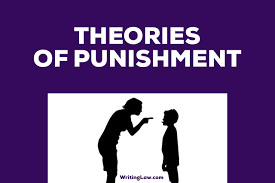Child Sexual Abuse And The Law In India
The World Health Organization (WHO) defines Child Sexual Abuse (CSA) as the involvement of a child in sexual activity that he or she does not fully
comprehend, is unable to give informed consent to, or for which the child is not
developmentally prepared and cannot give consent, or that violates the laws or
social taboos of society….[1] CSA includes an array of sexual activities like
fondling, inviting a child to touch or be touched sexually, intercourse,
exhibitionism, involving a child in prostitution or pornography, or online child
luring by cyber-predators.[2]
CSA is a serious problem of considerable magnitude throughout the world. A
recent systematic review of 55 studies from 24 countries found much
heterogeneity in studies in terms of definition and measurement of CSA and
concluded that rates of CSA ranged from 8 to 31% for females and from 3 to 17%
for males.[3]
Child Sexual Abuse in India
Historically, CSA has been a hidden problem in India, largely ignored in public discourse and by the criminal justice system. India is second most populous country in the world and latest Census reveals that it’s a home to 17% of the world's population. Nearly 19% of the world's children live in India, which constitutes 42 % (more than one third) of India’s total population and around 50% of these children are in need of care and protection. Signing up to the United Nations Convention on the Rights of the Child in 1992, India promised to protect its children from all forms of sexual exploitation and sexual abuse. The Convention [4]enjoins state machinery to prevent the inducement or coercion of a child to engage in any unlawful sexual activity.Growing concerns about female infanticide, child rapes and institutional abuse of children led to the commissioning of the first large scale government sponsored research study to assess the extent and nature of child abuse in India. In a shocking revelation, the Government commissioned survey has found that more than 53% of Indian children are subjected to sexual abuse / assault. Majority of these cases were perpetrated by someone known to the child or in a position of trust and responsibility, Not surprisingly, most children did not report the abuse to anyone. Further, there is regional and rural–urban variation in the rates and extent of CSA in the country.
Girls are more vulnerable to sexual abuse, although boys too reported a high percentage of victimisation and are subject to greater social stigma. Although sexual exploitation and abuse is strongly correlated to poverty, it occurs in families across the socioeconomic and religious spectrum. However, factors that facilitate CSA, such as poverty, overcrowding, extended family living arrangements, abundance of street children, and lack of recreational facilities in families are by no means exclusive to India. Admittedly, their impact might be exaggerated or intensified given the population density and size in India. Thus, a complex mix of individual, ecological and situational factors that are said to facilitate CSA might account for its prevalence in the Indian context.
Sexually abused children are severely let down by systemic failure of the criminal justice system to redress their grievances and by social ostracism associated with such abuse. Only 3 % of CSA offences were reported to the police. It is unsurprising that CSA is severely underreported given the shame and associated socio-cultural stigma, especially if the abuse is in the context of the family. This phenomenon is not unique to India but common to collectivist cultures in other Asian countries where an individual’s experience is ignored so as to protect the family from shame associated with sexual abuse.
Legal response to Child Sexual Abuse
Until recently, CSA was not publicly acknowledged as a criminal offence in India. Rape was the main, if not the only, specific sexual offence against children recognised by law in India. In the absence of specific legislation, a range of offensive behaviours such as child sexual assault (not amounting to rape), harassment, and exploitation for pornography were never legally sanctioned. Non-Governmental Organisations (NGOs) and the central government’s Ministry of Women and Child Development were actively engaged in helping break ‘the conspiracy of silence’ and have generated substantial political and popular momentum to address the issue. This led to increased activism around child protection issues in the media and public discourse. This movement spearheaded by the Ministry of Women and Child Development, led to the enactment of new legislation called Protection of Children against Sexual Offences Act, 2012 (POCSO Act).Distinctive features of POCSO Act
The POSCO Act was enacted to address criminalising a range of acts including child rape, sexual assault, sexual harassment, and pornography involving a child (under 18 years of age. The law mandates setting up of Special Courts to facilitate speedy trials in Child Sexual Abuse cases. Undoubtedly, the passing of POCSO has been a major step forward in securing children’s rights. The letter and spirit of the law, which defines a child as anyone under 18 years of age, is to protect children from sexual abuse.The POSCO Act provides for stringent punishments, which have been graded as per the gravity of the offence. The punishments range from simple to rigorous imprisonment of varying periods. There is also provision for fine, which is to be decided by the Court. An offence is treated as “aggravated†when committed by a person in a position of trust or authority of child such as a member of security forces, police officer, public servant, etc.
POCSO Act does not use the term ‘rape’ and also does not confine penetrative sex to penile penetration. Instead, it broadens the offence termed ‘penetrative sexual assault’ under the Act[5] to include oral sex, as well as, insertion of any object into anus, mouth or vagina, in addition to penile penetrative sex.
In the case of State vs Pankaj Choudhary[6] the Hon’ble Delhi High Court in 2011 prosecuted the accused only for ‘outraging the modesty of a woman’ for digital penetration of the anus and vagina of a 5 year old child since digital penetration was not recognised as an offence under the India Penal Code. The decision was delivered before the enactment of POSCO Act. However the addition of penetrative assault under the POSCO, 2012 has increased the cover of protection for children.
The POSCO Act also criminalises a range of behaviours as being sexual assaults, short of penetration.[7] Additionally, the offences of ‘aggravated’ penetrative and non-penetrative sexual assault is made more serious and attract stronger penalties [8]when committed by a specified range of perpetrators, in a wide array of situations or conditions, and/or has a severe impact on the victim. This includes sexual assault committed by persons in authority or position of power with respect to a child, committed by persons in a shared household with the child, in conditions such as: gang rape, causing grievous bodily harm, threatening with firearm or corrosive substances, during communal or sectarian violence, assaulting a child under 12 years of age, or one who is physically or mentally disabled, causing a child to become pregnant, or knowingly assaulting a pregnant child, or infecting the child with HIV, repeated assaults, or accompanied by public degradation. The definition is very comprehensive and covers a range of possible scenarios. These provisions has been made keeping in view the greater vulnerability and innocence of children.
POCSO Act is also forward thinking in many aspects, in that, the definition of sexual harassment includes repeatedly or constantly following, watching or contacting a child either directly, electronically or through other means thus, covering incidents of child harassment via sexting or sexual cyber bullying.[9] However, the interpretation of what might constitute ‘repeatedly’ or ‘constantly’ following or contacting a child with sexual intent (with the law specifying sexual intent being a ‘question of fact’) is unspecified in the Act and consequently is potentially contestable. The Act further penalises abetment of or attempt to commit any of the offences listed under the Act.[10]
The introduction of Special Court as provided under the Act plays a pivotal role in how the law and the evidence may be interpreted. The POSCO Act provides for Special Courts[11] where trial proceedings may be conducted in a more sensitive manner with the victim’s testimony given either ‘in camera’ (i.e. privately), via video-link, or behind curtains or screens, which is intended not only to reduce trauma but also protect the identity of the child. It incorporates child friendly procedures for reporting, recording of evidence, investigation and trial of offences.
The POSCO Act recognizes that the intent to commit an offence, even when unsuccessful for whatever reason, needs to be penalized. The attempt to commit an offence has been made liable for punishment for up to half the punishment prescribed for the commission of the offence. It also provides for punishment for abetment of the offence, which is the same as for the commission of the offence. This would cover trafficking of children for sexual purposes. At the same time, to prevent misuse of the law, punishment has been provided for making false complaint or proving false information with malicious intent. Such punishment has been kept relatively light (six months) to encourage reporting. If false complaint is made against a child, punishment is higher (one year).
The media has been barred from disclosing the identity of the child without the permission of the Special Court. The punishment for breaching this provision by media may be from six months to one year. For speedy trial, the POSCO Act provides for the evidence of the child to be recorded within a period of 30 days. Also, the Special Court is to complete the trial within a period of one year, as far as possible. To provide for relief and rehabilitation of the child, as soon as the complaint is made to the Special Juvenile Police Unit (SJPU) or local police, these will make immediate arrangements to give the child, care and protection such as admitting the child into shelter home or to the nearest hospital within twenty-four hours of the report. The SJPU or the local police are also required to report the matter to the Child Welfare Committee within 24 hours of recording the complaint, for long term rehabilitation of the child.
The POSCO Act casts a duty on the Central and State Governments to spread awareness through media including the television, radio and the print media at regular intervals to make the general public, children as well as their parents and guardians aware of the provisions of this Act. The National Commission for the Protection of Child Rights (NCPCR) and State Commissions for the Protection of Child Rights (SCPCRs) have been made the designated authority to monitor the implementation of the Act.
The provisions under the POSCO Act were made more stringent by the Union Cabinet on July 10, 2019 by proposing amendment in the Act.[12] The proposed amendments provide for protection of children from sexual offences in times of natural calamities and in other situations where children are administered, in anyway, any hormone or any other chemical substance to attain sexual maturity for the purpose of penetrative sexual assault. The notable aspect is approval to provide death penalty to child rapist for committing aggravated penetrative sexual assault against the child.[13]
Major Impediments in implementation of POSCO Act
The Act has faced unforeseen challenges in its complete implementation. Its implementation is pathetic in the country and the pace of enforcement is very slow. While cases registered under POSCO Act are constantly on the rise including brutal gang rapes, the rate of conviction is just 4%, acquittal 6 % and pendency almost 90 %, as per the National Crime Records Bureau. Some of the notable challenges faced in the enforcement of the Act are as follows:a) Administrative pitfalls
As per the provisions of the POSCO Act,[14] the State Governments in consultation with the Chief Justice of High Court should designate a Sessions Court as a Special Court to try offences to facilitate speedy trial. However, POSCO Act further provides that if a Sessions Court had been already notified as a children's court under the Commissions for Protection of Child Rights act or if any other Special Court has been designated for similar purposes under any other law, it could also be considered as a Special Court under the POSCO Act. Despite the statutory stipulation that every district should have an exclusive POCSO court, the directives have been continuously ignored.The prime challenge among the effective implementation of the POSCO Act is the failure to set up Special Courts to deal with Child Sexual Abuse in all the districts of the country. Setting up of these courts was an essential mandate of the Act, the lack of which has resulted in considerable delay in the disposal and pendency of the cases registered under the act.
The apathetic attitude of the State Government's bureaucracy is reflected by the fact that until and unless the Supreme Court does not intervene, neither do they formulate any manual related to a law, nor do they fulfill other formalities for its implementation.
b) Lack of expertise to handle the cases
To make the matters worse, the judges appointed to handle CSA matters are not subject experts as neither are they provided additional training by the state government nor do they seriously study the law pertaining to such cases. As a consequence, they consider such cases as an additional burden, and hence, cases of CSA are not dealt effectively and efficiently as envisaged under the Act.A classic example of the lack of expertise is reflected in a judgment passed by a Special Court (actually a sessions court) in Thane, Maharashtra, on the 22nd of December 2016 where the court issued a perjury notice to a 16-year-old minor girl in a case registered under the POSCO Act The girl had allegedly been subjected to rape by her father. Although she testified against her father in the examination-in-chief, she turned hostile during the final stages of the cross-examination conducted by the defence counsel. The trial strategy on part of the defense was similar to the rape trials involving adult women victims, where attempts are made to devalue the credibility of the victim by questioning her sexual history and moral character.
This step belies the spirit and objectives of the Act, which stipulates child-friendly atmosphere through all stages of the judicial process and given paramount importance to the principle of “best interest of the child.†More importantly the Act excludes children from being punished for providing false information.[15] In an erroneous move, in this case, the Special Court relied on the POCSO bill, which had allowed a child above 16 years filing a false complaint to be sent to the Juvenile Justice Board for suitable remedial action. However, this clause was deleted when the bill was passed by the Rajya Sabha and is not part of the current law. Unfortunately, in this case, on account of the ignorance of the judge, a judgment was passed in compliance to the POCSO Bill and led to this erroneous decision.
Hence there is an urgent need to educate the medical, judicial, and law-enforcing agencies about the Act. Awareness and training of all the stakeholders is one of the important variables in providing comprehensive care and justice to children, the future of our country.
c) Other Challenges
For children who have been sexually abused, the aftermath of a trial is perhaps of more concern than the act of getting justice through a potential conviction. This is particularly true when the perpetrator of the abuse is a relative or acquaintance known to the victim, as is the case with 95% of abused children. If the abuser is a family member, reporting the case would mean entering the home of the child, breaking his or her family and probably putting him or her in a shelter home, which can be traumatic for the child even if the abuser is jailed. These concerns also often prevent adult caregivers from reporting abuse that a child may have disclosed to them.Further the police and other officials are not sensitised enough, children are probed about their ordeal multiple times, and outside of urban spaces, there is a dearth of qualified counsellors to provide emotional support to the child. At the district level, the child’s statement is often taken inside the police station, or the police go to interview the child in uniform which will not only be intimidating for a vulnerable child, but it can also expose the child’s identity in a neighbourhood.
Conclusion
Child Sexual Abuse is a scourge of Indian society and hence the Act was introduced in 2012. However, no law can be implemented effectively and efficiently, without the dedicated and coordinated efforts of the implementing agencies. A multidimensional approach is required in this regard, and the onus lies with the state governments, police department, judicial system, and medical fraternity to implement the act in letter and spirit and to respond to these cases with urgency, empathy, and compassion. Speedy trials are possible if the judges, their staff, prosecution, police, and defence coordinate with each other, failing which concept of special courts will be defeated. Similarly, doctors also need to be trained to understand the intricacies and help in proper scientific collection of various evidences while examining the child victim of sexual abuse.Compared to recent years, there is an increase in the number of cases being reported and the same is due to the awareness which was able to be created through various training and awareness programs along with NGOs and Friends of the Police. To improve the conviction rate, it is important to speed up both investigation and trial in court so that the survivor is not put under pressure to turn hostile. The trial in POCSO cases should be completed in one year but instead there is a huge number of cases pending in the courts. Also the entire process needs to be more children-friendly.
End-Notes
[1] World Health Organisation. Report of the consultation on child abuse prevention (WHO/HSC/PVI/99.1).Geneva(Switzerland): World Health Organisation, 1999.
[2] Putnam FW. Ten-year research update review: child sexual abuse. Journal of the American Academy of Child
and Adolescent Psychiatry. 2003;42(3):269–78
[3] Barth J, Bermetz L, Heim E, Trelle S, Tonia T. The current prevalence of child sexual abuse worldwide: a
systematic review and meta-analysis. International Journal of Public Health. 2013;58(3):469–83
[4] Article 34 (a) of the United Nations Convention on the Rights of the Child, 1990
[5] Section 3 of the POSCO,2012.
[6] Delhi High Court Order dated August 17, 2011 in Crl.Appeal No813/2011.
[7] Section 7 of the POSCO, 2012.
[8] Sections 5 and 9 of the POSCO, 2012.
[9] Section 11 (iv) of the POSCO, 2012.
[10] Section 16 of the POSCO, 2012.
[11] Section 35 of the POSCO, 2012.
[12] Section 9 of the POSCO, 2012.
[13]https://www.thehindubusinessline.com/news/pocso-act-amended-death-penalty-for-child-sex-
abuse/article28363265.ece
[14] Section 28 (1) of the POSCO, 2012.
[15] Section 22 (2) of the POSCO, 2012.
Law Article in India
Legal Question & Answers
Lawyers in India - Search By City
LawArticles
How To File For Mutual Divorce In Delhi

How To File For Mutual Divorce In Delhi Mutual Consent Divorce is the Simplest Way to Obtain a D...
Increased Age For Girls Marriage

It is hoped that the Prohibition of Child Marriage (Amendment) Bill, 2021, which intends to inc...
Facade of Social Media

One may very easily get absorbed in the lives of others as one scrolls through a Facebook news ...
Section 482 CrPc - Quashing Of FIR: Guid...

The Inherent power under Section 482 in The Code Of Criminal Procedure, 1973 (37th Chapter of t...
The Uniform Civil Code (UCC) in India: A...

The Uniform Civil Code (UCC) is a concept that proposes the unification of personal laws across...
Role Of Artificial Intelligence In Legal...

Artificial intelligence (AI) is revolutionizing various sectors of the economy, and the legal i...








Please Drop Your Comments